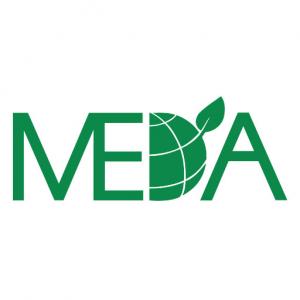Lessons from Farming Households: Agricultural Decision Making and Shifting Social Norms for Women’s Economic Empowerment
Image

This post is based on a new learning paper, “Lessons from Farming Households: Agricultural Decision Making and Shifting Social Norms for Women’s Economic Empowerment,” published as part of the MEDA INNOVATE learning series.
Decisions that smallholder women and men make within their households are not influenced by productivity gains and cost savings alone. It's well understood in agricultural development and financial inclusion efforts that rural women face compounded socio-cultural and economic barriers in accessing training, information, finance, land, and other inputs and assets critical to achieving success in agriculture-related enterprises. In many developing countries, women represent 40-50% of the agricultural labor force but continue to face barriers at the household, community, and national levels in building resilient livelihoods despite their important role in transforming rural economies.
Through a three-year initiative funded by the International Development Research Centre (IDRC), MEDA’s INNOVATE initiative partnered with ten organizations in South Asia, South America, and East Africa to assess the potential of non-traditional finance to enable large scale adoption of agricultural innovations among women and men smallholder farmers.
INNOVATE’s new learning paper, “Lessons from Farming Households: Agricultural Decision Making and Shifting Social Norms for Women’s Economic Empowerment,” explores how decisions are made within agricultural households around production, including the adoption and uptake of new practices or inputs along with savings, credit, and insurance products.
Author Larissa Schneider (MEDA) highlights examples from the INNOVATE portfolio that demonstrate the importance of working with partners to encourage greater engagement for women in agriculture and finance through increased decision-making about production.
Estimates suggest that if the gender gap in agriculture closes, yields on women-run farms could increase by 20-30 percent, effectively raising agricultural outputs in developing countries by 2.5-4 percent, which could lead to increased and sustained livelihoods for millions of farming families.
It is critical for those working in women’s economic empowerment programming to consider the impacts of a constrained enabling environment, as well as socio-cultural barriers such as traditional or harmful social norms, on the differential access women and other underserved populations may have to the important drivers of financial inclusion in agriculture — education, entrepreneurship or employment opportunities, and financial services.
Recommendations for Financial Institutions and Implementing Organizations
Customer Acquisition and Retention
- Utilize sex-disaggregated indicators to evaluate results and consider qualitative results management frameworks to ensure quality over time.
- Test assumptions of women’s willingness to pay, engage, and adopt new behaviors, technologies, or practices, within their agricultural settings.
- Seek to understand and uncover complex social norms, which often dictate the actions, or inactions, of men and women within what seems like practical, agricultural household decision making.
- Cash flow is imperative for rural smallholder households, but for many, that is not the only constraint determining decisions on agriculture.
Product Development
- Test new ideas with small pilots in limited geographic areas to build trust, consensus, and shared understanding among clients, agents, and other shared parties; remain agile and focused on learning.
- Develop products and services that are tailored to client needs, by accepting alternative forms of collateral (read more about this topic in MEDA’s learning paper ‘Experiences in Gender- Sensitive Solutions to Collateral Constraints’); integrating flexible repayment terms; and mobile or door-to-door agent banking.
- Understand client decision-making processes and priorities in the household, consider such nuances and complexities in product or service design and deployment.
Partnerships and Collaboration
- Work with grassroots women’s organizations when possible to ensure programming, products, or services ‘do no harm’ within the context of intrahousehold relations, but also within communities and existing community structures.
- Engage women’s groups and women stakeholders through participatory consultative methods to design, deploy, and monitor new or existing models to ensure gender-based analyses occur.
- Engage enabling environment stakeholders, including government and community leaders, market enablers, etc. early on in your work to ensure smooth gender mainstreaming across actors.
- Work within groups, associations, or collectives, and promote peer-to-peer sharing networks, as women often have rich community ties and benefit from learning and sharing new information with peers. Similarly, engage husbands and other household members alongside women, when appropriate, to encourage equality and shared understanding.


